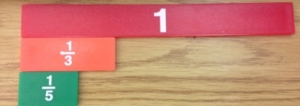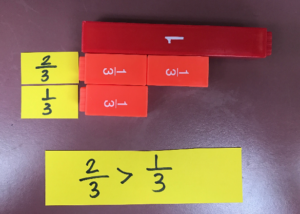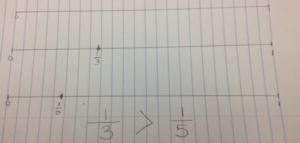In 3rd grade, students are expected to compare two fractions that have either the same numerator or the same denominator. When comparing fractions, it is important for students to understand the value of the fraction and consider both the numerator and denominator and their relationship to each other. So be cautious of teaching statements such as:
“The smaller the denominator, the larger the fraction.”
“The larger the denominator, the smaller the fraction.”
It is important for students to begin comparing fractions with a concrete representation, such as the area model to help them understand the size of the parts and number of parts.
Using representations to compare fractions help students develop their number sense about fraction size. This awareness helps them to understand the strategies they use to compare whole numbers do not necessarily compare to fractions (1/2 is greater than 1/6 even though the whole number 6 is greater than 2). Through hands on experience, students will understand that the larger the digit in the denominator the smaller the piece.

Make sure these symbols are used when comparing fractions:
< less than > greater than
= equal to
These Learn Zillion videos support students understanding of comparing fractions with the same denominator or numerator:
Compare fractions to the same whole: https://learnzillion.com/lesson_plans/7801-compare-fractions-to-the-same-whole
Compare fractions with the same numerator: https://learnzillion.com/lesson_plans/8217-compare-fractions-with-the-same-numerator-using-the-greater-than-and-less-than-symbols

